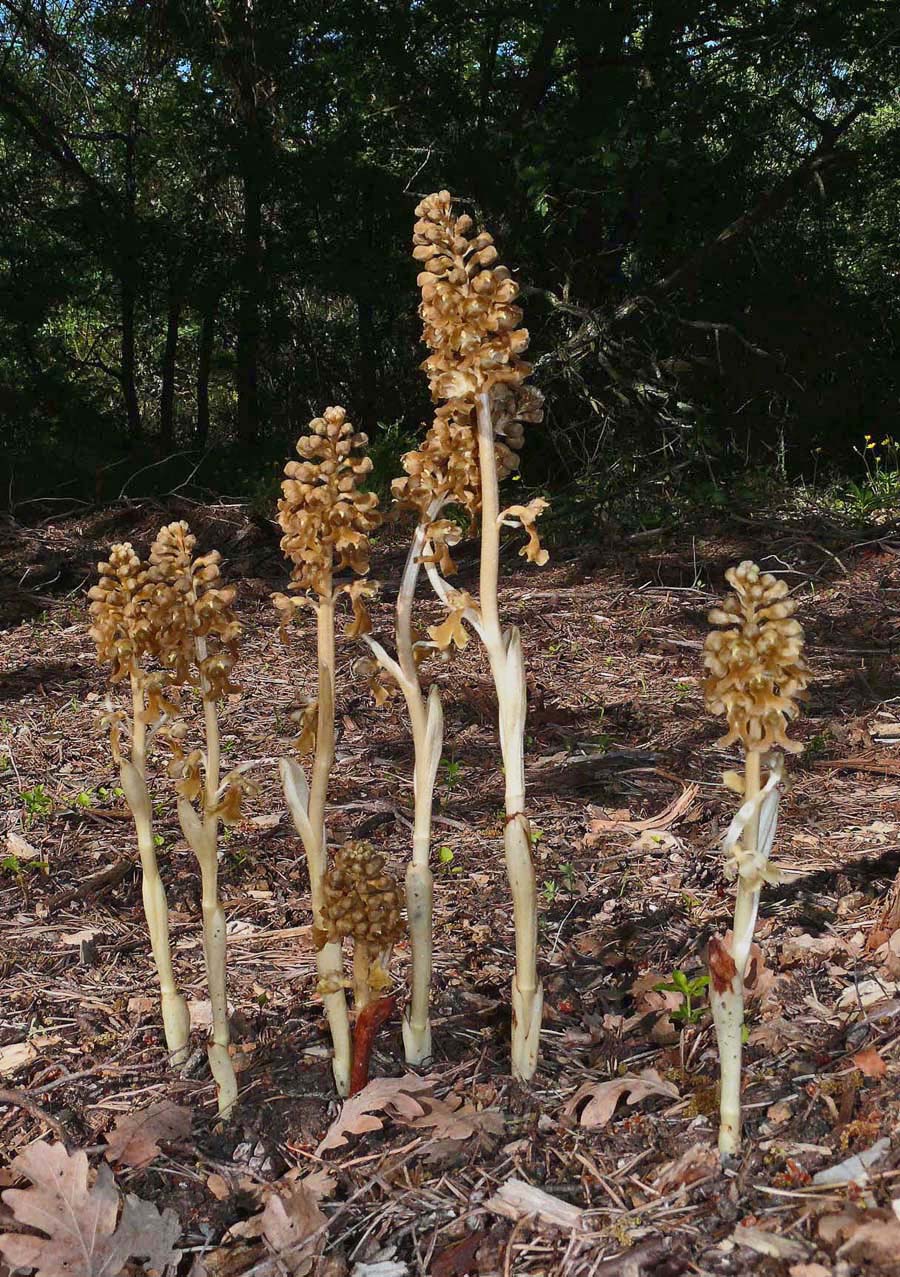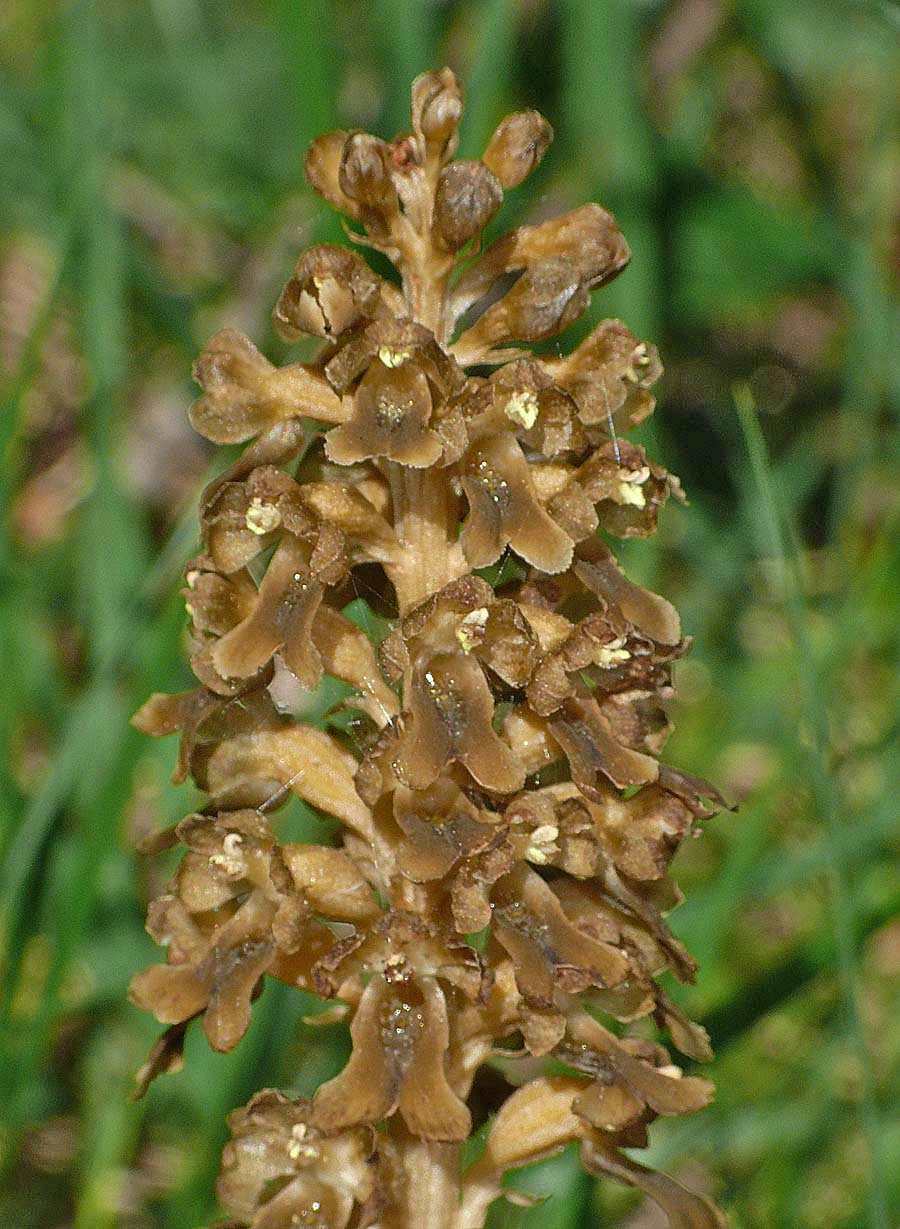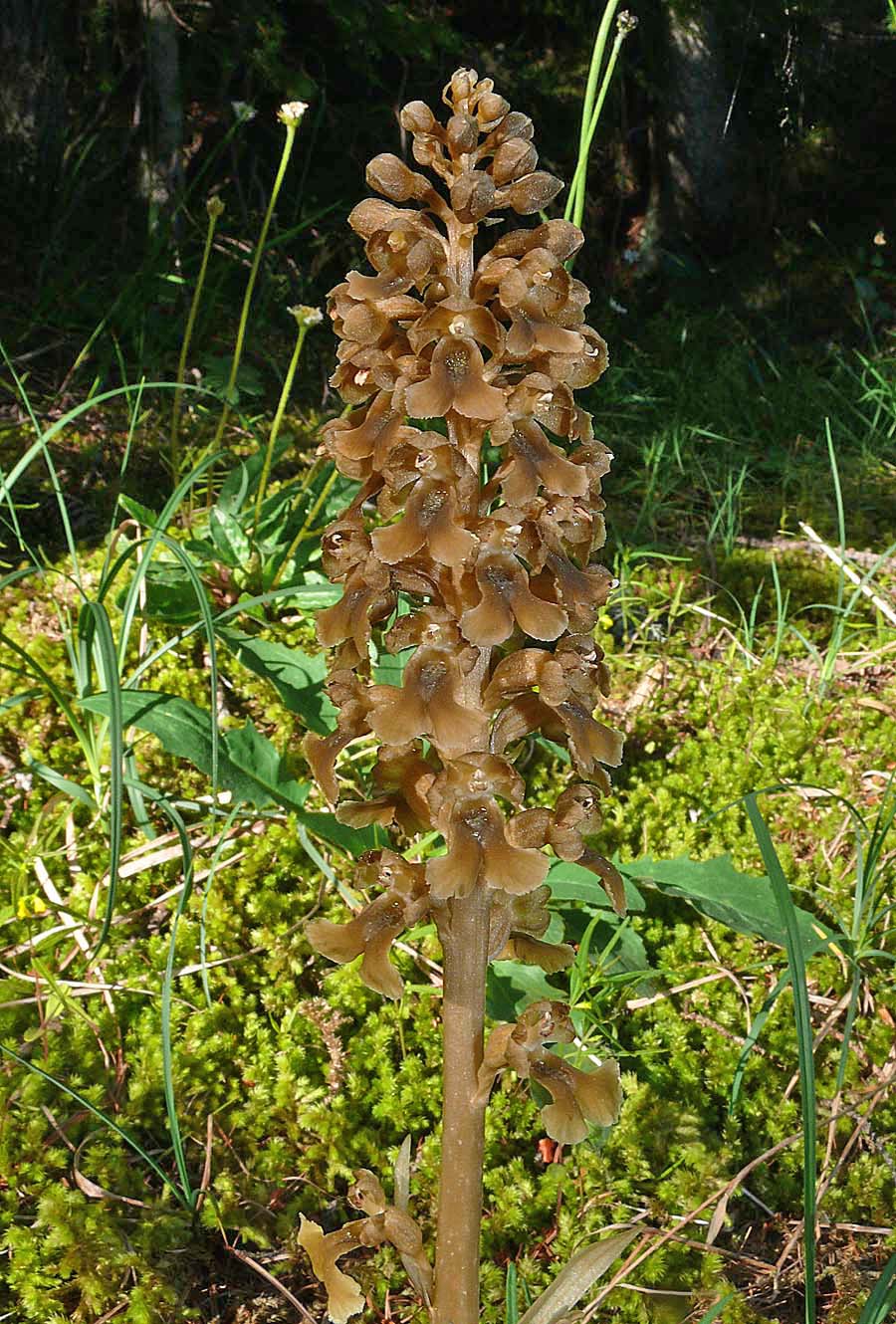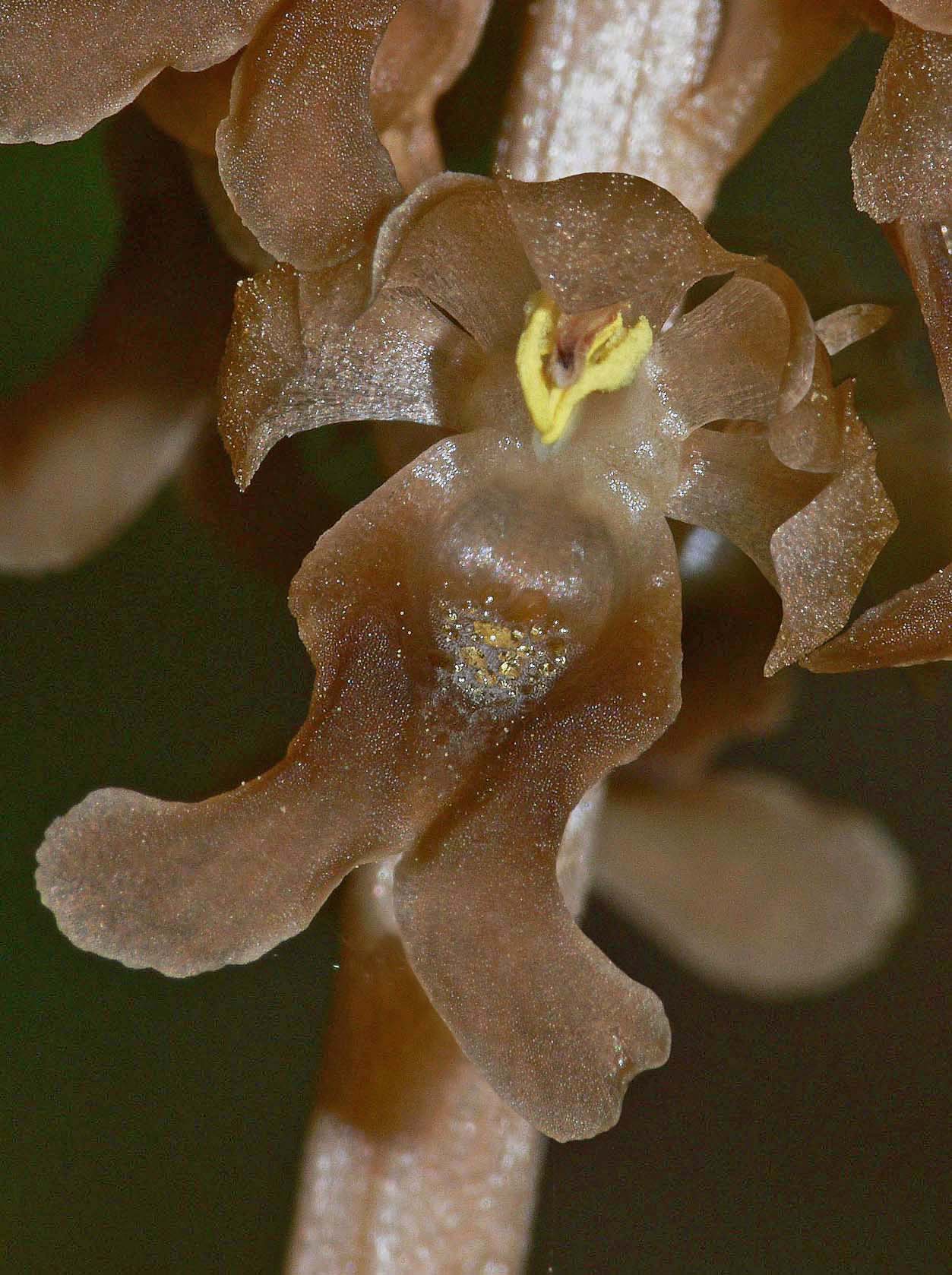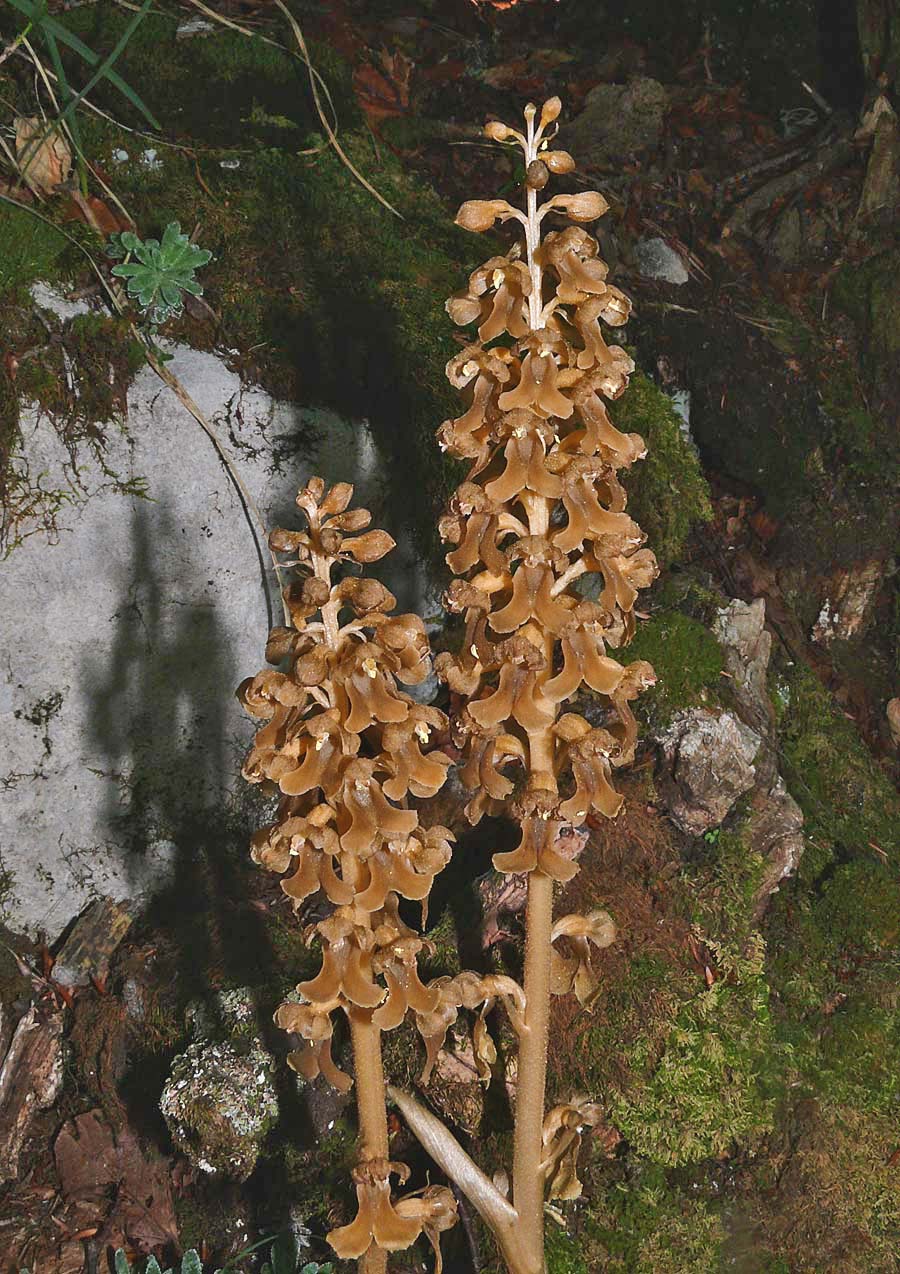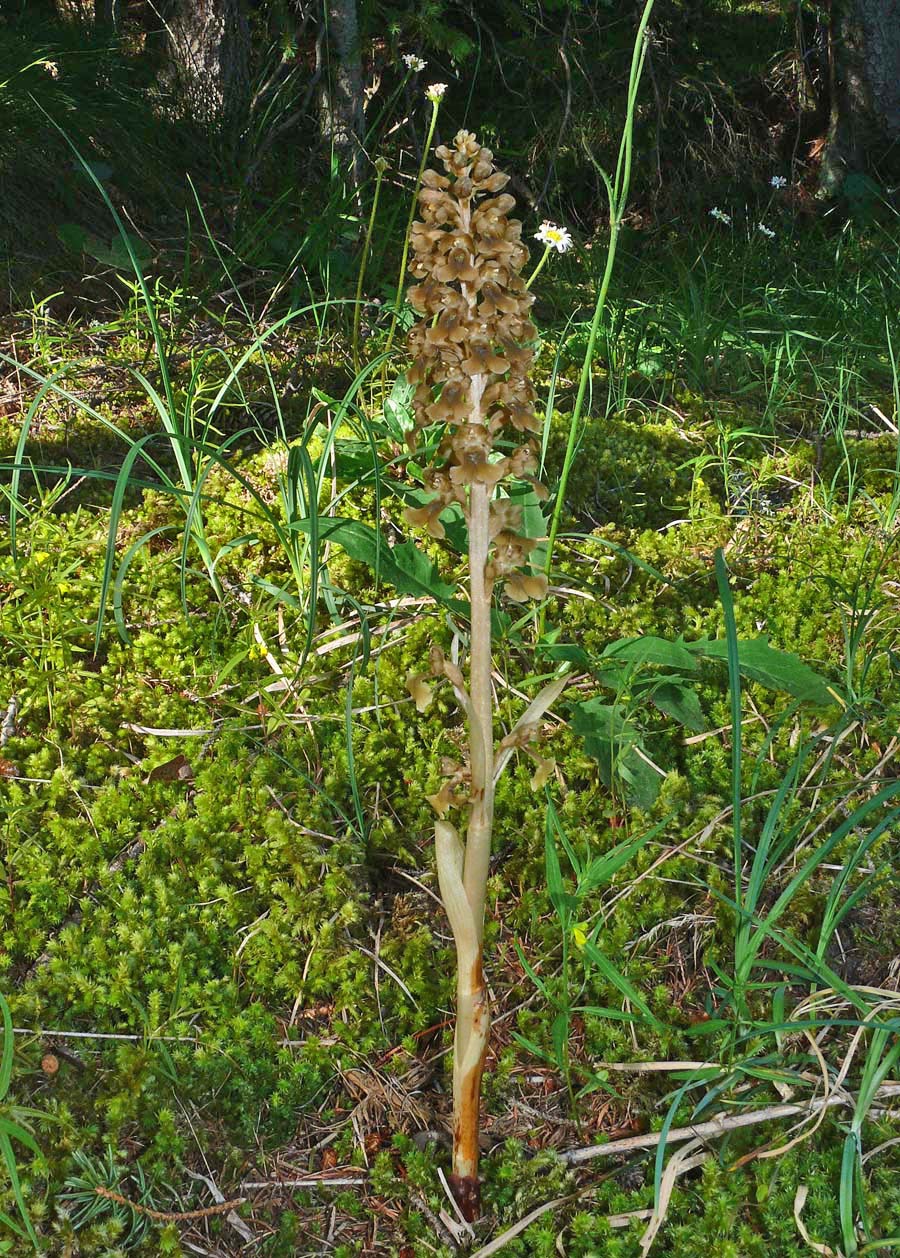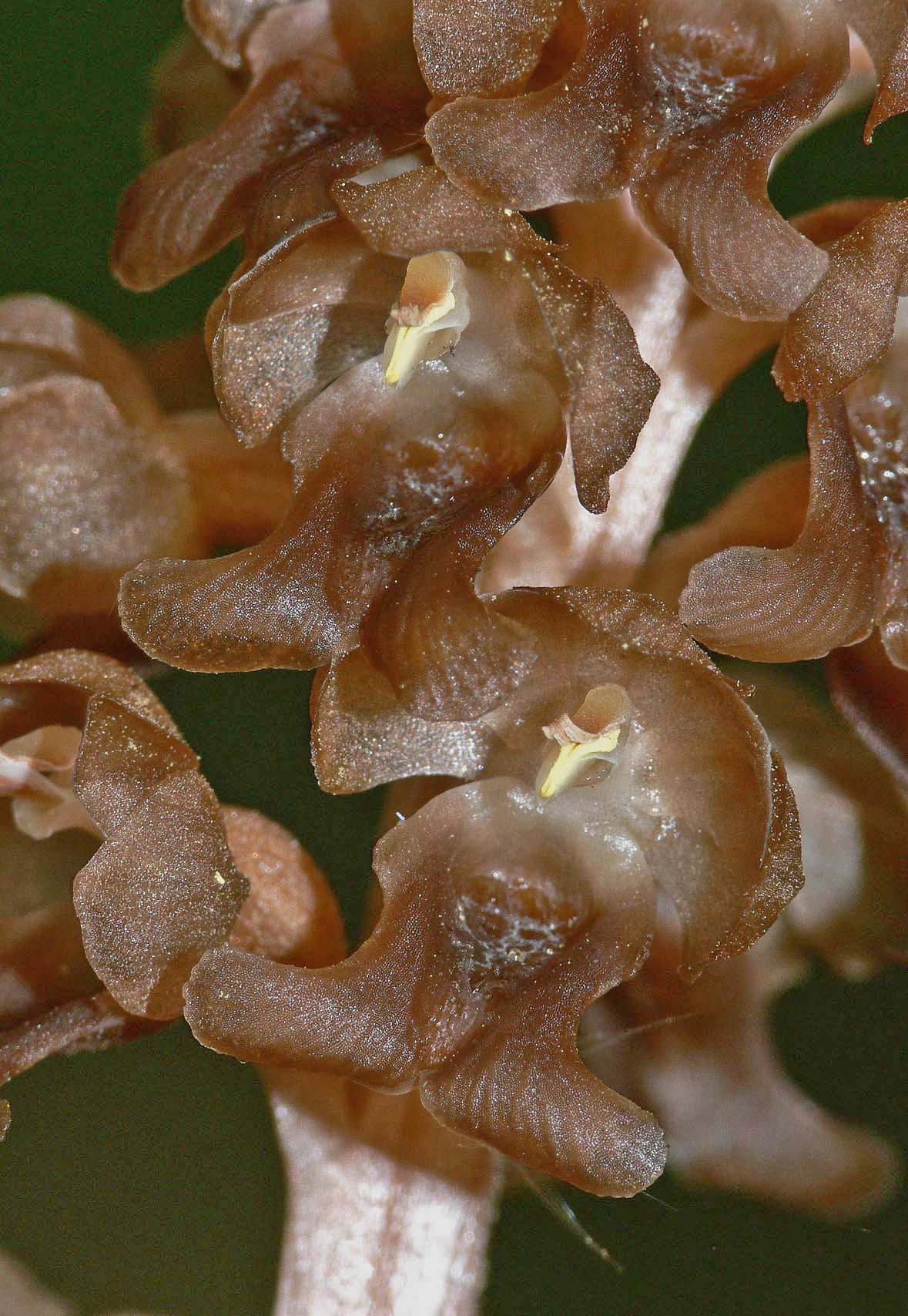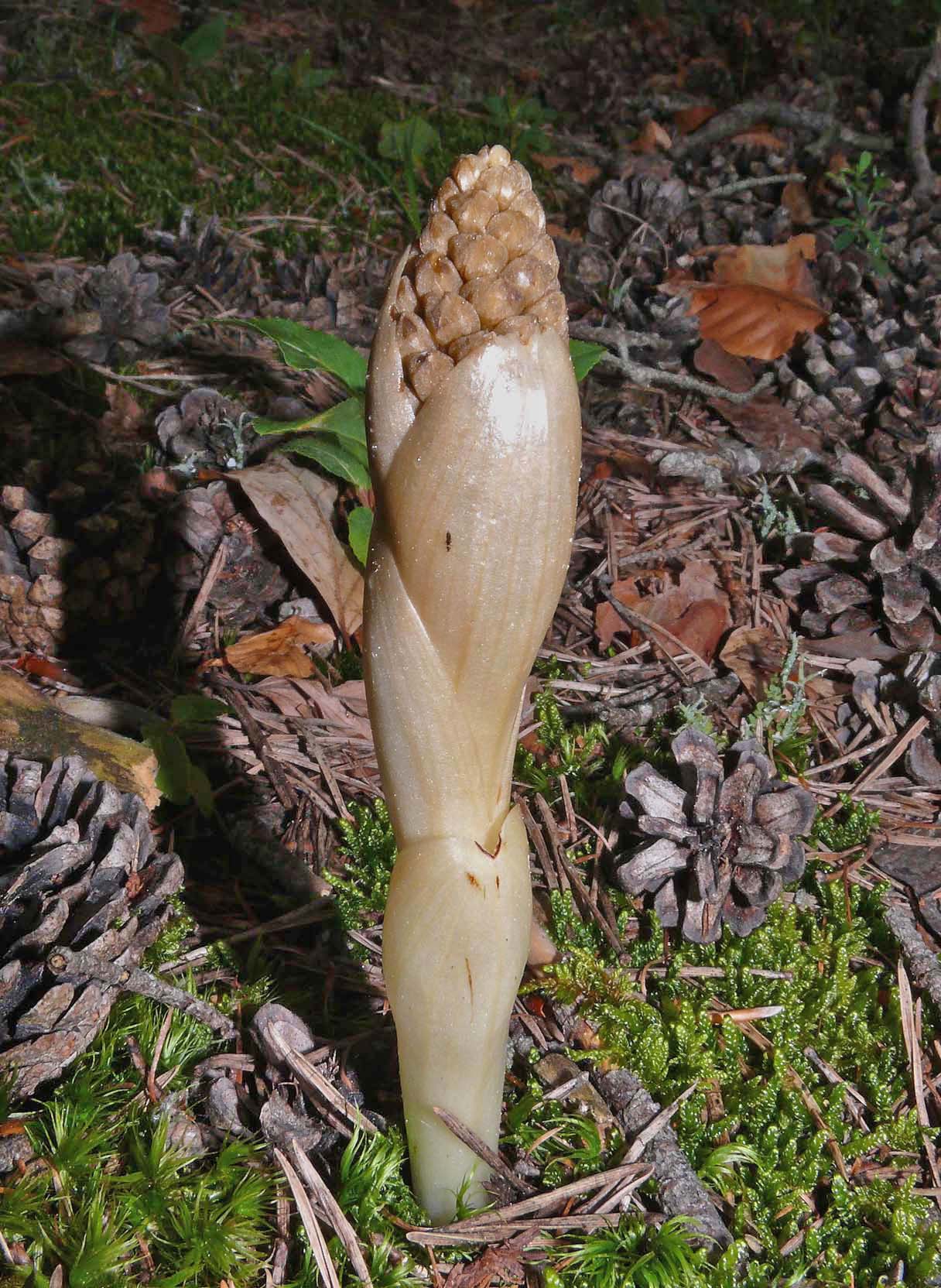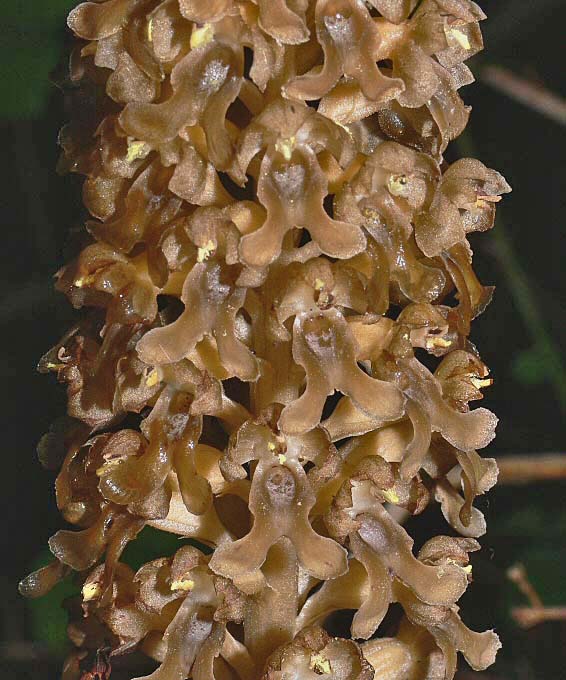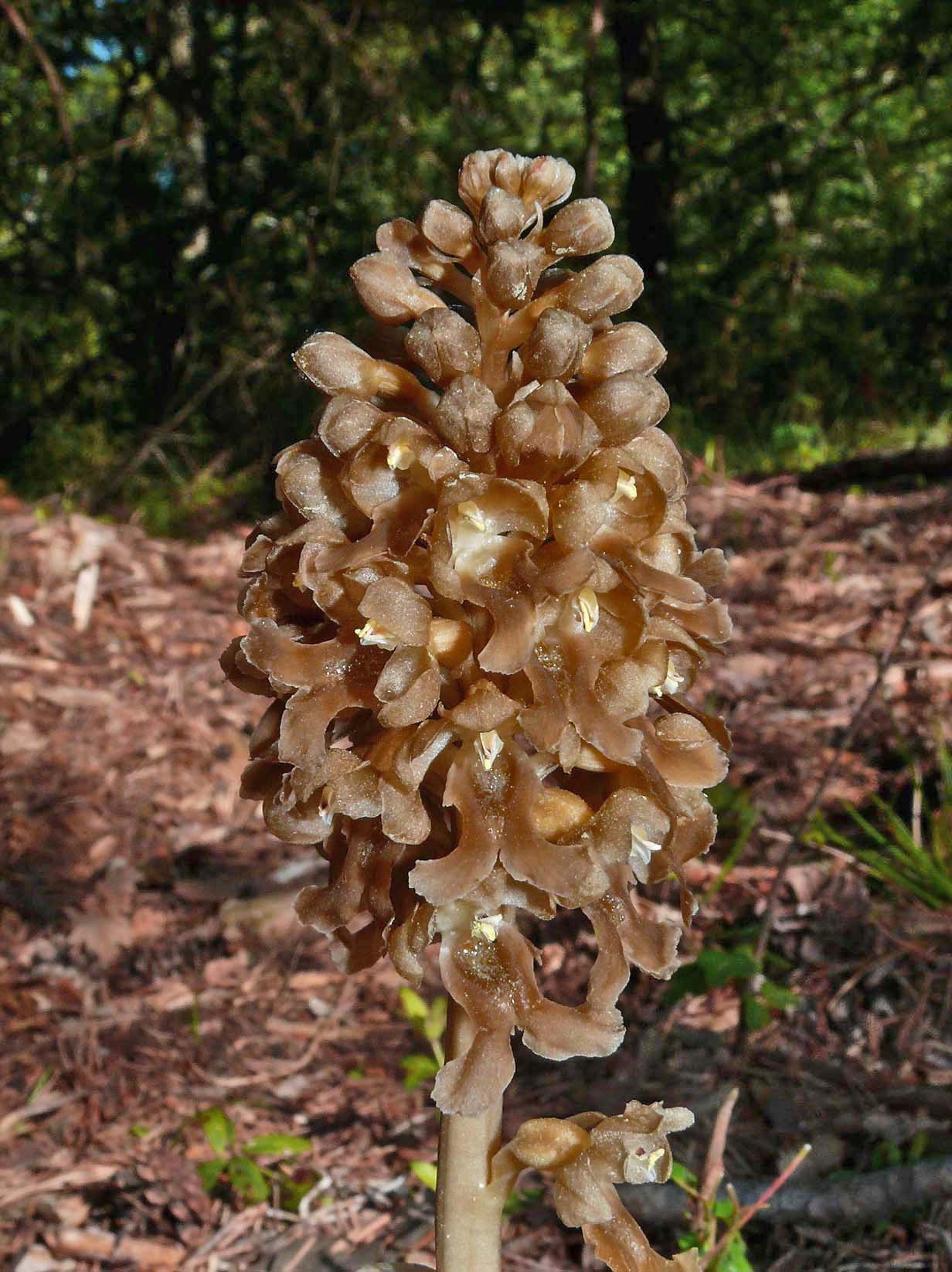This
species was first described from southern England by Richard in 1753
and its
specific name literally means bird's nest, this being a reference to
the tangled mass of roots that support the short creeping rhizome. Neottia also means nest and perhaps unsurprisingly therefore, it has long been commonly known as the Birds Nest Orchid.
N. nidus-avis is extremely widespread, occuring throughout the temperate zones of Eurasia as far east as Japan. It is largely a saprophytic orchid though experiments have demonstrated an ability to manufacture small quantities of chlorophyll, particularly where the plant is growing in good light conditions. Normally however it is a denizen of damp, shady, deciduous or conifer woodland where its unmistakable honey coloured inflorescence appears above ground from May to July. It reproduces primarily by vegetative expansion and can often form substantial colonies over significant areas. This said it does produce small quantities of nectar that is attractive to small insects, mainly flies, which do in turn pollinate the flower. In some circumstances it is possible for N. nidus-avis to complete its reproductive cycle without appearing above ground at all, this being a capability it shares with E. aphyllum, the Ghost Orchid.
As previously mentioned it is a highly distinctive orchid that does not possess green leaves, these being replaced by light brown scales that sheath the stem. It is most commonly found in woodland on alkaline soils but will venture to the lighter margins of the wood and has been known to persist in full sun for some years where deforestation has occurred. Where a group of several stems occur in close proximity as in the first photograph, it should be noted that they will all be individual plants formed by simple root division.
N. nidus-avis is extremely widespread, occuring throughout the temperate zones of Eurasia as far east as Japan. It is largely a saprophytic orchid though experiments have demonstrated an ability to manufacture small quantities of chlorophyll, particularly where the plant is growing in good light conditions. Normally however it is a denizen of damp, shady, deciduous or conifer woodland where its unmistakable honey coloured inflorescence appears above ground from May to July. It reproduces primarily by vegetative expansion and can often form substantial colonies over significant areas. This said it does produce small quantities of nectar that is attractive to small insects, mainly flies, which do in turn pollinate the flower. In some circumstances it is possible for N. nidus-avis to complete its reproductive cycle without appearing above ground at all, this being a capability it shares with E. aphyllum, the Ghost Orchid.
As previously mentioned it is a highly distinctive orchid that does not possess green leaves, these being replaced by light brown scales that sheath the stem. It is most commonly found in woodland on alkaline soils but will venture to the lighter margins of the wood and has been known to persist in full sun for some years where deforestation has occurred. Where a group of several stems occur in close proximity as in the first photograph, it should be noted that they will all be individual plants formed by simple root division.
